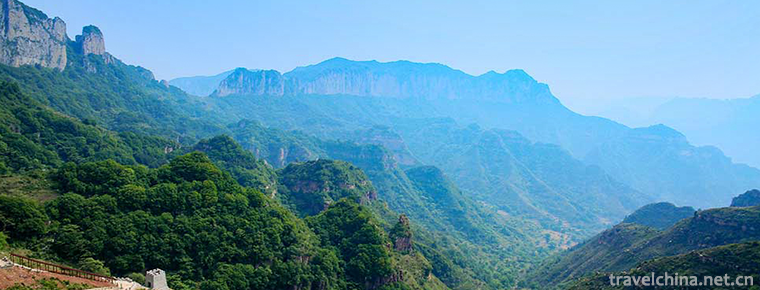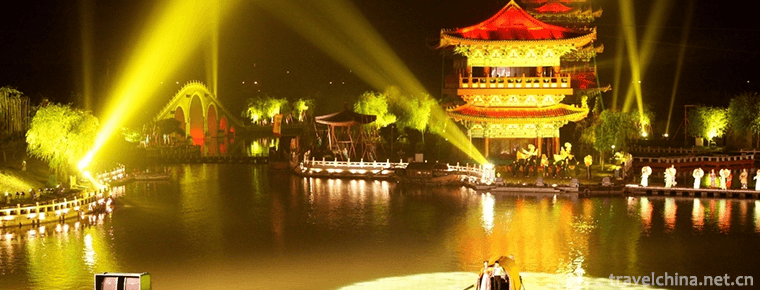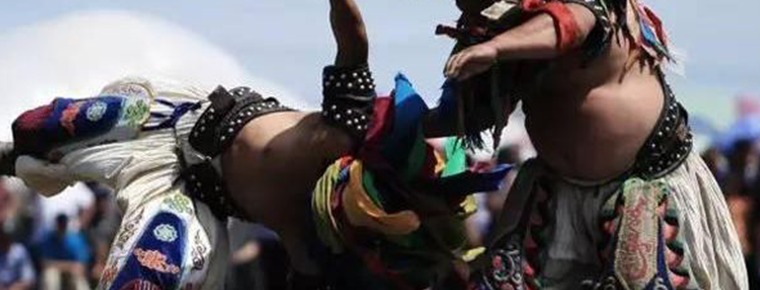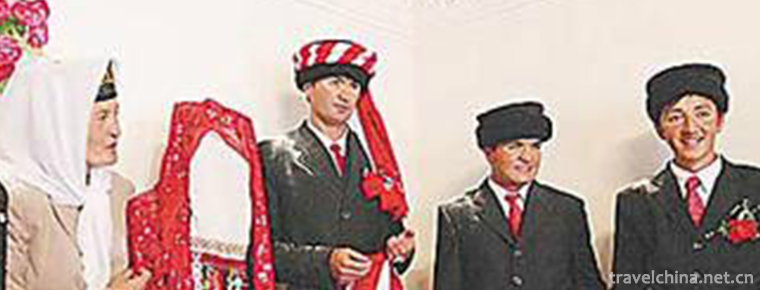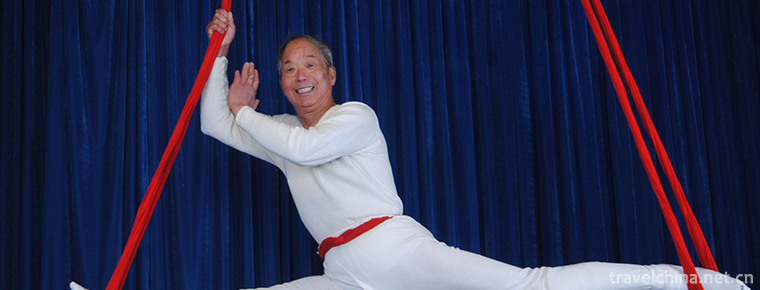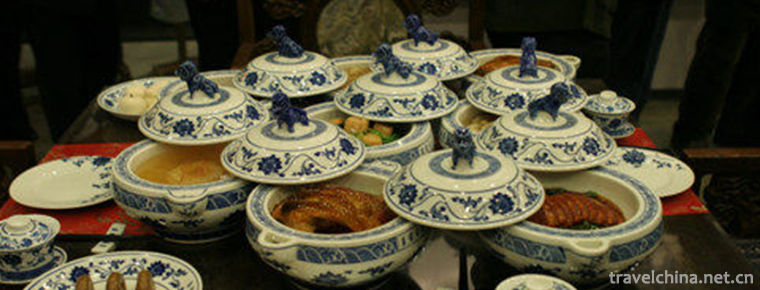Xinyang Folk Songs
Xinyang Folk Songs
Xinyang Folk Song is the traditional folk music of Xinyang City. Xinyang City, known as the hometown of song and dance in Henan Province, has a rich stock of traditional folk music, dance and other traditional cultures, which are different in style from other regions in Henan Province north of the Huaihe River. Before the founding of the People's Republic of China, there was a great change, that is, some new elements of music and dance were added to the traditional folk music and dance in the original state to form the so-called new folk songs and dance; after the founding of the People's Republic, there were two "literary and artistic collections" in 1978, and the folk songs and dances in the original state changed in the process of preservation and protection. Pure primitive traditional music and dance are rare. Instead, based on the original folk music and dance materials, a group of music and dance programs have been created.
On June 7, 2008, Xinyang Folk Songs were approved by the State Council to be included in the second batch of national intangible cultural heritage lists.
historical origin
Xinyang Folk Song is a rare treasure in Henan culture, which integrates Yuyun and Chufeng. It has not been proved since when it originated. Just like the whole history of human singing, its origin has more than ten hypotheses, such as Darwin's theory of sexual desire, imitation, rhythm of labor, emotion and shouting.
According to legend, in ancient times, the Huaihe River Basin inhabited the Dongyi Group led by Shaohao. They took birds as totem, believed that birds were the incarnation of gods and the messenger of communication between gods. They listened attentively to the singing of birds and thought that it was the voice of gods.
Subsequently, the ancestors of Huaidi sprouted the consciousness of "witch" (dance) in the flight of birds.
Later, a man named Chengtang, born in Dongyi Group, established the Shang Dynasty. His interest became a national cultural feature. Businessmen "like singing and dancing, worship ghosts and gods." From Shang Dynasty to Zhou Zhichu, the ancestors of Huaidi believed in gods and ghosts, and the witchcraft was very flourishing, which objectively developed the primitive singing and dancing.
During the Warring States Period, the music in Xinyang area had already used the twelve-tone scale which was close to the twelve-average-temperament, which laid the foundation for Xinyang folk songs. This is a glimpse of the bells of the Warring States Period unearthed in the Chu Tomb of Changtaiguan No. 1, Xinyang, in 1953.
It can be imagined that among the ancestors of Huaidi, there was a man who first imitated the singing of birds, then he occasionally sang several sounds, felt good, and sang loudly again. The rock wall responded to his song, which made him very excited. So he sang several sentences that he had just sung in succession, and controlled his song according to his will, singing the tune he wanted to sing. This means that he has been able to create melody, let the combination of tones occur for the purpose, and the form has become complex. It completely surpasses the singing of a bird at the same pitch or at the same group of pitches. The most basic and typical characteristic of human singing is the conversion of music. This man is the first singer of Xinyang. His song echoing among the rock walls is the first folk song of Xinyang.
artistic characteristics
Xinyang folk songs can be roughly divided into more than ten kinds, such as revolutionary historical love songs, folk songs, new folk songs, chants, folk songs, field songs, water songs, lantern songs, hawking, minor, children's songs, political songs, ritual songs, narrative songs, etc. They profoundly and vividly reflect the lives, thoughts, feelings, will and aspirations of the people of Xinyang, reflect the social practices of different regions and different times in Xinyang, and are the crystallization of the collective wisdom of the people of Xinyang. Although they have been trained by thousands of efforts, they are constantly bringing forth new ideas.
During the census of Xinyang folk dance in the 1980s, there were more than 80 kinds of dances, more than 120 performing forms, more than 400 traditional programs and more than 3350 performing class clubs, accounting for more than one third of Henan's dance performance clubs.
In May 1984, Henan TV took Xinyang Folk Song as the main subject to shoot the music feature film "Songxiangxing" (episode I and II), which was broadcasted on CCTV in November of the same year and re-broadcasted in the international joint broadcasting program of the station. There are 224 Xinyang folk songs in Henan Volume of Integrated Chinese Folk Songs. Famous Xinyang folk songs include "Osmanthus Blossom in August", "Send Lang to the Red Army", "Flower sedan chair to the door", "Car Water Song" and so on.
In 1989, Henan TV also filmed the TV art film Emotional Dabie Mountain with Xinyang folk songs and dances as its content and broadcast it on CCTV for many times. Famous Xinyang folk dances include flower pick, flower fan, umbrella, fire lady, lion dance, spring bull dance, bamboo and horse dance, dry boat, dragon lantern and so on.
Melody Characteristics
Xinyang City is located in the southern edge of Zhongzhou. It also borders with Hubei and Anhui. This has formed the unique linguistic characteristics of Xinyang area, which has both the linguistic charm of Hubei Province and the elements of Zhongzhou Language. Thus, the folk music language of Xinyang area has a rigid and soft style. From the melodic line, folk songs popular in the southern mountainous areas, with homophone repetition and four, five, seven, eight or even ten degree jump more people, a wider range, emotional unrestrained, fresh and bright, you can feel that rough, robust characteristics. At the same time, it portrays the heroic image of the people in mountainous areas who are diligent, brave, brave and brave in struggle. Such as "December Point", "Stone Mink Chant", "Playing Chess Tune" and so on.
The melodies of folk songs in Huaihe River Basin and hilly areas in the central part of China are mainly composed of progressive melodies and large fluctuations of melodic lines. Its characteristics are smooth rhythm, smooth tone, slow speed, graceful and moving, exuding a strong local flavor. Sometimes it is exaggerated with other interesting linings. Make these minors more plain, humorous and interesting. Such as "Six Immortal Songs", "Flower sedan chair to the door", "Beautiful mountains and rivers as picturesque" and so on. There are also some folk songs that break down chords and show happy mood. Such as "grab eight sentences", "slow cattle" and "Mr. Zhang begs for money" and so on.
Scale characteristics
The pentatonic scale plays a dominant role in Xinyang folk songs. A full scale of seven tones has not yet been found. In a few folk songs, such as "piercing heart tune" and "selling firewood tune", although there are clear-angle and palace-changing sounds, these five external sounds have a short time value. Most of them appear in weak beat or are used as passing tones. To a large extent, they are only the function of prayer decoration and foil. The basic framework of their melody does not lose the essence and characteristics of the five voice scales.
Representative Works
His representative works such as "Harvest Happiness", "An Umbrella", "Mountain Fishing Song" and "Gong, Drum and Nuo Yang" have won prizes in national performance and performance competitions. In addition, there are some music performance forms and programs in Xinyang traditional culture, such as "Huangchuan Gong and drum", "Shangcheng silk string" and so on.
Inheritance Significance
It is understood that many valuable traditional ballads have gradually disappeared because no one sings or sings for a long time. Even in a town with folk songs, about half of the villagers in the town go out to work, and most of them stay at home to buy houses and do small businesses in the county. Their children go to school in the county. They don't even know what folk songs are, let alone sing folk songs.
This is not only the embarrassment of traditional culture encountering modern civilization, but also a new subject of social progress and inheritance of tradition.
It is undeniable that some traditional ballads need to be sung in certain occasions and activities. By analogy, today's young people no longer have the mood and environment to express their love by singing like their predecessors. Calling, surfing the Internet or dating directly are more direct to the theme of love, so love songs gradually disappear. Another example is the water car song. Today, the times have developed. Don't talk and sing the water car song. Even the water car that once provided the water car song for thousands of years can only be found in the museum. At the same time, due to the increasingly rich cultural and entertainment activities, singing folk songs is no longer the main way of leisure, and it is inevitable that folk songs are neglected.
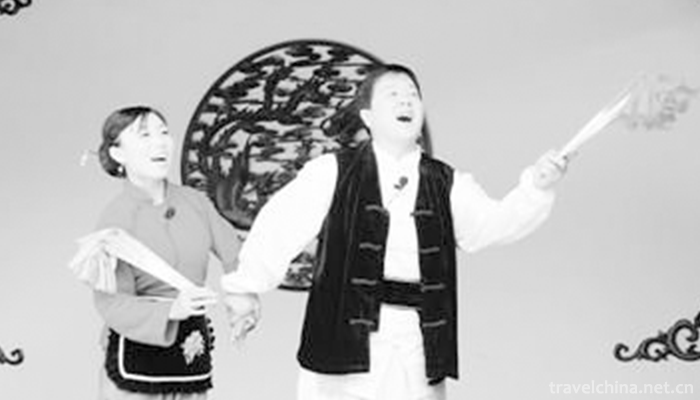

Xinyang Folk Songs
-
Qibugou Scenic Area
Qibugou Scenic Area is located in Wu'an Huoshui Township, Handan City, Hebei Province. Wu'an National Geological Park and the hinterland of the National Forest Park, Hebei Province
Views: 193 Time 2018-12-17 -
Beijing Wildlife Park
Beijing Daxing Wildlife Park is located in the 10,000 Mu forest of Yuyuan Town, Daxing District. It is a large natural ecological park with animal protection, wildlife domestication and breeding and p
Views: 123 Time 2018-12-26 -
Shanghe Garden Scenic Spot in Qingming Dynasty
Qingming Shanghe Garden is a large-scale theme park of Song Dynasty cultural scenery constructed by the people's government of Kaifeng City in Henan Province
Views: 194 Time 2019-02-07 -
Saint Sophia Cathedral in Harbin
St. Sophia Church is located in Sophia Square, Daoli District, Harbin City, Heilongjiang Province, China. It is a Byzantine-style Orthodox Church built in 1907
Views: 203 Time 2019-02-08 -
Taiping Ancient Town Scenic Area
Taiping Ancient Town is located at the junction of Gulin River and Chishui River, 35 kilometers away from Gulin County. Across the river from Xingmin Township in Xishui County, Guizhou Province
Views: 122 Time 2019-02-13 -
Nadam
Nadamu is Mongolian, also known as Nair. Nadamu is a Mongolian transliteration, meaning "entertainment, games" to express the joy of harvest. The Nadamu Congress is a traditional festival wi
Views: 94 Time 2019-06-06 -
Sharipol wrestling
Shaliboer style wrestling is a national traditional sports event originally created and retained by the Weilat Mongolian people. It is one of the main sports events in the Uznada Mu Grand Event in Ala
Views: 170 Time 2019-06-12 -
Tajik Marriage Customs
On the Pamir Plateau, which is more than 4000 meters above sea level, there is a Tajik people living in China. This is a people who can sing, dance and hospitality. Their life is full of mystery, and
Views: 147 Time 2019-06-17 -
Adjustment and suspension
Lifting is a unique folk sports event in Shaoxing City, Zhejiang Province. Appeared in the middle and late Qing Dynasty, the tuning and hanging actors were named "tuning and hanging" because
Views: 109 Time 2019-06-21 -
Cuisine Skills of Official Cuisine in Zhili
The culinary skill of official dishes in Zhili is a precious cultural heritage of Baoding ancient city. Since the Qing Dynasty and the Republic of China, official cuisine and cooking skills in Zhili h
Views: 161 Time 2019-07-25 -
Beijing University Of Agriculture
The predecessor of Beijing University of Agriculture, Tongxian agricultural school, Hebei, was founded in 1956. In 1958, Tongxian agricultural school in Hebei province was merged with Beijing agricult
Views: 343 Time 2019-09-06 -
Leshan water resources
There are many rivers in Leshan City, including Minjiang River, Dadu River, Qingyi River and many small and medium-sized rivers. It is a water rich area with an average annual water production of 11.37 billion cubic meters. With 74.14 billion cubic meters
Views: 86 Time 2020-12-17
